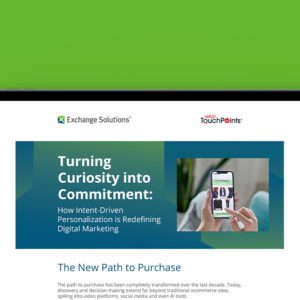By Christophe
Marcant, Stibo Systems

A recent report from Forrester
Research predicts that by 2017, the Internet will influence half of all retail
purchases in some way. Features like store locators, price checks, and ratings
and reviews will drive decisions. As more and more shoppers are likely to visit
an e-Commerce web site prior to visiting a store, or even have a smartphone in
hand while in a physical store, retailers need to consider the implications for
their businesses.
In response to these challenges, retailers
are turning to Master Data Management (MDM) in order to create a rich and
satisfying shopping experience across all channels, as well as to gain greater
control over master data assets. MDM technology can help retailers achieve
accurate product and customer information and use it to feed a variety of
destinations including web sites, print catalogs and Enterprise Resource Planning
(ERP) systems.
This year, retailers should consider the
following trends that will present additional opportunities to create the most
positive and consistent shopping experiences for their customers:
Advertisement
1. The Changing Purchase Cycle Reality: Today’s purchase cycle
is more complex and unpredictable as consumers can be prompted by an ad or by
browsing online. The downside of this new shopping cycle is that customers see
no difference between in-store and online shopping, and they expect each
interaction to be identical. However, retailers don’t have the tools to make
the experience seamless. Retailers will look to unite payment capabilities like
Apple Pay, coupons and loyalty rewards. In addition, they want to enable new
customer experiences by taking advantage of both mobile and wearable devices.
Master Data Management and Product Information Management (PIM) solutions can provide
retailers with a single source of quality data that is channel neutral to
enable consistency and customer satisfaction.
2. Creating New In-Store Encounters: Retailers are
creating experiences in the store, but they shouldn’t stop there. They need to utilize
technology to create experiences that will provide even more personalized
and memorable customer encounters. Interactive digital signage is one such customer
experience enhancer, as it enables consumers to look for a sample garment on
the rack, then go to an interactive monitor with the item, and be presented
with information on that product such as available colors, sizes, etc. Another
technology, Magic Mirror, allows consumers to wear and compare items. The
consumer would take a self picture, and then the system virtually dresses
the consumer in the item to allow that person to digitally try on the item. In
addition, the customer can compare images or send the image to Facebook friends
for collective input.
iBeacons are another
interactive technology that can be embedded in mannequins. iBeacons trigger apps on a smart phone or other device to come
to life and talk about what the mannequin is wearing and what is offered in
store. This enables shoppers to interact with retail store displays and products. These
new retail technologies are dependent on the availability of rich complete
product information. Retailers must leverage MDM/PIM to create a single
source of rich product data for these new technologies.
3. Enabling A
Connected Retail Experience: In store, customers use mobile in new
ways to enhance their purchase experiences. They price check among retailers,
read online reviews, search for coupons and if necessary, check
product-specific availability, such as size or color. As a result, the customer
is often better informed than the retail employee. A store is no longer just
about products — brand experience is key. Companies that approach e-Commerce
with an omnichannel mindset are better able to understand their customers’ needs,
preferences and how best to communicate with them. Each time a customer chooses
to engage with a retailer, regardless of channel, new information can be
gathered on product, payment, brand and preferences.
4. Reverse Showrooming/Webrooming:
While showrooming is not a new concept, it is evolving into what
is known as Reverse Showrooming or Webrooming. This is where consumers research
products online, but make the final purchase at the brick-and-mortar location.
This latest shopping trend has become the new norm for today’s connected
consumers, as 88% of shoppers regularly webroom, while only 76% showroom,
according to a recent study.
5. Click-And-Collect Comes Of Age: Because so many
consumers are not available when postal and delivery services arrive, click-and-collect
is becoming a true value-add for consumers. This service will become more
prevalent because it allows products to be delivered to a store or location of the
customer’s choice. Mobile provides real-time choices and communication that
enables the consumer to make essential and impulse purchases via digital
channels. Click-and-collect is a perfect service for these time-sensitive e-Commerce
purchases. A retailer must pay close attention to optimizing the
mobile experience. By utilizing PIM, retailers can ensure they
present the relevant product information to consumers when and where they
desire.
Christophe
Marcant is Vice President of Product Strategy at Stibo Systems, a global leader
in multidomain Master Data Management (MDM) solutions. Contact him at chrm@stibosystems.com or visit www.stibosystems.com.








